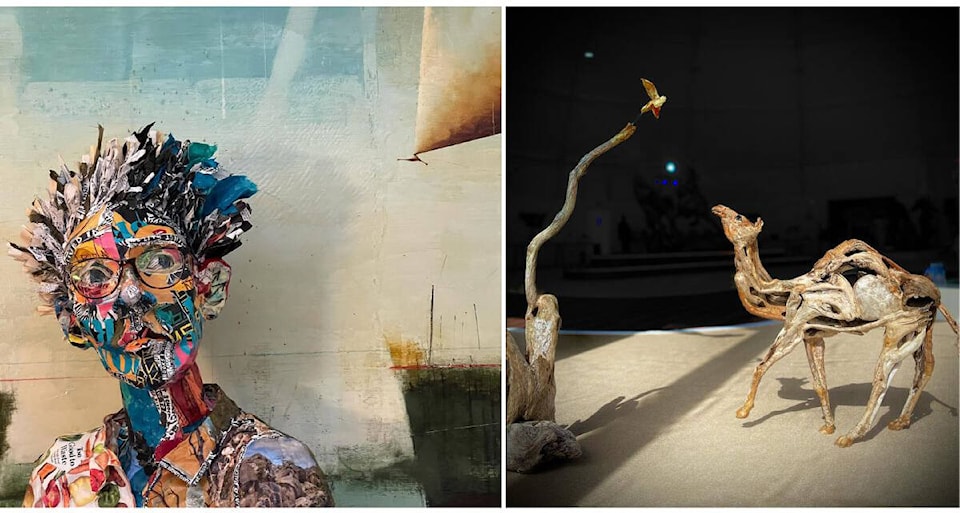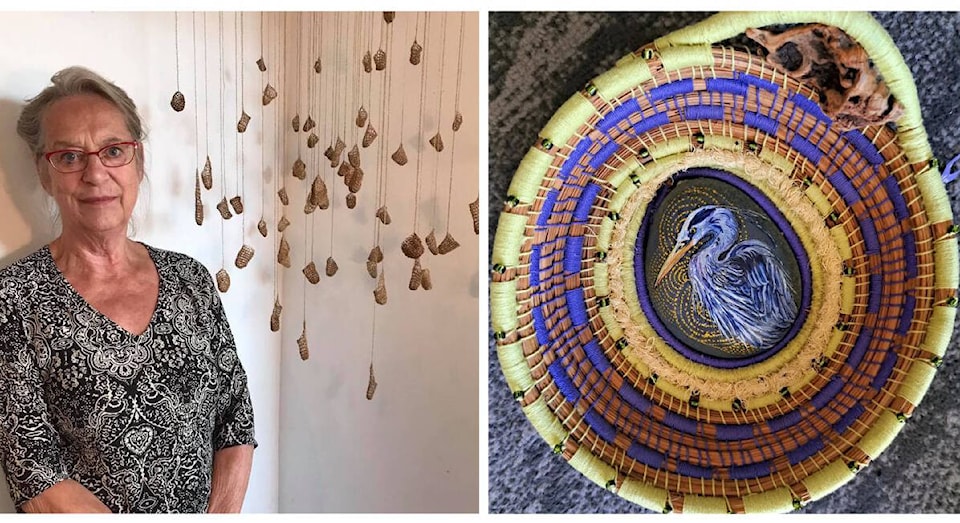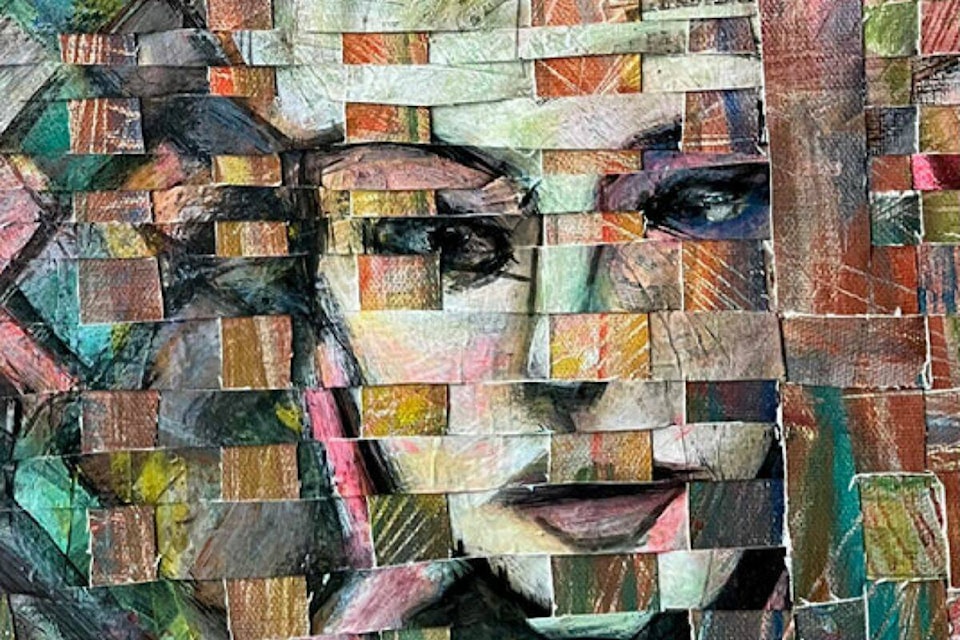Victoria artist Beverly Hancock used to paint a painting and be done. But now, she cuts it up. And then, she weaves it into something new.
Karen Guilbault gathers pine needles خعر»´«أ½“ sometimes sheخعر»´«أ½™ll even politely ask city removal not to rake over a spot. She then patiently bundles and weaves them into intricate baskets.
Award-winning fibre artist Martina Edmondson now makes whimsical creations out of nature foragings.
These women are all established artists riding the waves of a rising tide: the growing trend of repurposed art. Essentially, itخعر»´«أ½™s using found or existing objects to create something entirely new.
خعر»´«أ½œItخعر»´«أ½™s a huge trend in the world, but the biggest trend is to use garbage and reuse things that we donخعر»´«أ½™t think are beautiful,خعر»´«أ½ Hancock said. خعر»´«أ½œAnd to try to make something that no oneخعر»´«أ½™s ever seen before out of something you would usually throw out.خعر»´«أ½

In February, another خعر»´«أ½کrepurposedخعر»´«أ½™ artist from Victoria, driftwood sculptor Tanya Bub, was at an international exposition of repurposed art in Qatar called the Tadweer Art Exhibition. The exhibit merged the worlds of art and environmental consciousness, stated to be a testament to Qatarخعر»´«أ½™s commitment to sustainability.
For artists who approach art through this lens, the draw lies in reconnecting with the natural world while relinquishing control and embracing spontaneity.
خعر»´«أ½œI start with something that I find really interesting,خعر»´«أ½ Edmondson said of her diverse pieces, which include collage, sculpture and eco printing (using natural materials to dye paper with earthy tones and create imprints). خعر»´«أ½œI might think, oh, maybe this looks a little bit like a face or this could be an eagle. And then my imagination takes a flight.خعر»´«أ½
She also does embroidery, but, خعر»´«أ½œItخعر»´«أ½™s not pretty embroidery. I guess I donخعر»´«أ½™t do pretty very well. Or, I donخعر»´«أ½™t find it pretty.خعر»´«أ½
Pretty isnخعر»´«أ½™t the point when approaching art in this manner. خعر»´«أ½œYouخعر»´«أ½™re making it for yourself. And I think that comes with age,خعر»´«أ½ Edmondson said.
Hancock, an expressionist and figurative artist who finds it خعر»´«أ½œexhilaratingخعر»´«أ½ to rip up and re-imagine her paintings into new works, agreed this is a new era of art-making for her. خعر»´«أ½œIt is really interesting to see how artistsخعر»´«أ½™ work changes as their situation in life changes.خعر»´«أ½

A growing eco-consciousness in the arts community
While repurposed art has always been around, all three artists said theyخعر»´«أ½™ve seen it growing in popularity, all part of a growing eco-consciousness.
خعر»´«أ½œI think with the way climate change is going, there will be more and more emphasis on, what are we using? What are we doing to the environment?خعر»´«أ½ Edmondson said.
خعر»´«أ½œIخعر»´«أ½™m not saying everybodyخعر»´«أ½™s there, but, you know, I have a big following online. Itخعر»´«أ½™s a very big topic,خعر»´«أ½ Hancock said.
خعر»´«أ½œMany, many artists would say, خعر»´«أ½کThereخعر»´«أ½™s no paper towel in my studio. Iخعر»´«أ½™m using rags.خعر»´«أ½™ So if you canخعر»´«أ½™t do everything, youخعر»´«أ½™re trying to do something, right? And I think every artist is sharing that information with each other.خعر»´«أ½
Guilbault primarily uses pine needles to create her baskets. But she also paints stones to feature in the centre of these baskets, and once sheخعر»´«أ½™s done painting, she wipes her palette so the paint doesnخعر»´«أ½™t go down the drain.
خعر»´«أ½œYou see how we are all thinking about it,خعر»´«أ½ Hancock said. خعر»´«أ½œWhen I went to art school, what a squiggle of time ago, in the 1970s, nobody talked about that. There wasnخعر»´«أ½™t a single person in the art world that had ever even discussed, what do we do with this paint? Is it bad for the world?خعر»´«أ½
Experience repurposed art
While the artists just wrapped up a group exhibit at Gage Gallery in March, Beverly Hancock will be exhibiting at Gage again April 2-14 with RAW: Unveiled Layers, which delves into the raw experiences that shape the human condition.
If you are interested in this type of artwork you can also check out art by Gerhard Bأ¤r, Martha Haversham, Michelle Reader, Wim Delvoye and Yuken Teruya.
But Hancock, Guilbault and Edmondson would probably also encourage you to try it out for yourself.
خعر»´«أ½œIt is magical. After you get going, you go, خعر»´«أ½کI could have never thought of thatخعر»´«أ½™,خعر»´«أ½ Hancock said.



